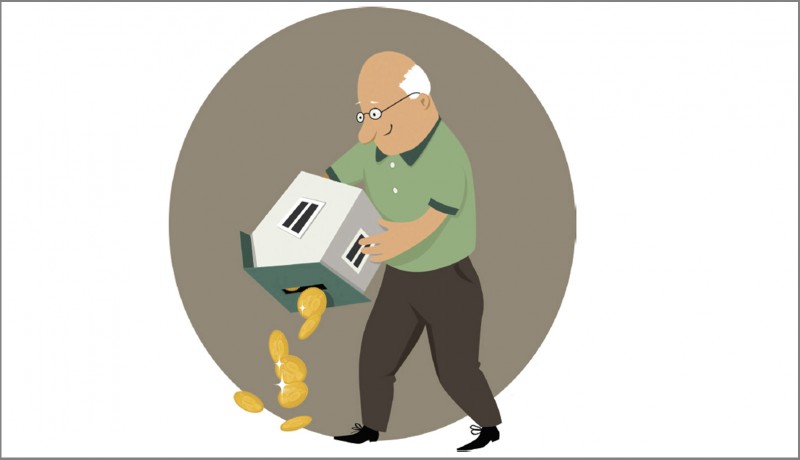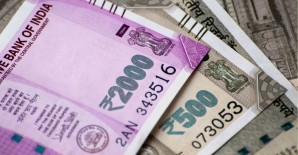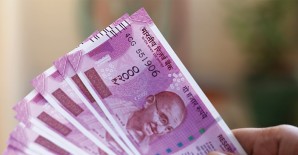
Money

Economist Priya Desai discusses the benefits of reverse mortgage of house
Owning a dream home is one of the biggest aspirations for most of us. Often, a big chunk of a person’s income goes towards seeing this dream materialise brick by brick. Years pass by, and before we even realise it, we are at the threshold of the sunset years, with the fledglings having grown wings and flown away to build homes and families of their own. This is the time when most silvers are beset with financial worries. Reverse Mortgage of House (RMH) is a viable solution tailored to meet the needs of such silvers.
Decoding RMH
RMH was introduced in India in 2007. In simple words, it is the exact opposite of a housing loan. The National Housing Bank (NHB) is the apex body for all RMH schemes.
A person who puts up their house for reverse mortgage is called a borrower. Borrowers receive periodic payments, yet continue to live in the same premises. This gives them some financial stability without forgoing their property.
In 2009, the Government introduced yet another scheme, Reverse Mortgage Loan-enabled Annuity (RMLeA), to provide a lifetime income.
How it works
When a house owned by a borrower is pledged to the bank, it is assessed for its monetary value. Some of the major determinants in the assessment are the demand for the property, prevailing property prices and the condition of the house. The loan amount arrived on the basis of these parameters is disbursed to the home owner in the form of periodic payments after discounting for the margin of interest costs and price fluctuations. These periodic payments are called ‘reverse EMI (equal monthly instalments)’. These are received by the borrower over the fixed loan tenure. Each payment pari passu decreases the equity or interest of the borrower in the house.
A few basics
- Home owners above the age of 60 are eligible. The minimum age of the spouse (if a co-applicant) is 58.
- The life of the property should be a minimum of 20 years.
- The amount of the loan is 60 per cent of the property value.
- Maximum loan tenure is 15 years and minimum 10 years, though some banks provide RMH loans for 20 years.
- Revaluation of property is done every five years.
- Loan payments are available monthly, quarterly, annually or in a lump sum.
The benefits
- Reverse mortgage income doesn’t attract any tax: Silvers would generally be worried about the tax implications of this regular flow of income. However, as the amount received is typically a loan, it doesn’t attract any tax. When the lender sells the property to recover the loan amount after the death of the borrower, the surplus (if any) is liable for capital gains tax. Income under RMLeA used to be taxable, but the scheme received a shot in the arm when it became tax-free in 2013.
- The borrower doesn’t lose the house: The owner of the house need not harbour any apprehensions about not having a roof above their head once the loan period is over. The owner of the house and the spouse can continue to stay in the house till their death, even after the loan tenure is over. However, they will stop receiving monthly payments.
- The owner retains the right to sell the property: If the owner chooses to sell the house, the lender will recover the loan amount, interest and other expenses. Any loss from the sale of the property is borne by the lender while any profit is passed on to the borrower after adjusting the principal, interest and other costs. If the sale occurs after the death of the property owner, the next of kin has the first right to buy the property once the dues have been paid off.
What ails the concept?
Despite being in existence for almost a decade, RMH and RMLeA haven’t caught on in a big way unlike in the West, where silvers exercise their right to earn income from their assets. There are a number of reasons for this, such as:
- Complex and confusing nature of schemes
- Lack of clarity on how the product works
- RMH is a financial product and has risks like other products of such nature. These risks are neither highlighted nor understood correctly
- Lack of properly trained bank staff to sell the scheme
- Lack of unanimity of payout calculations
- Inconsistent answers to customer queries from different organisations
- Unavailability of watertight and comprehensive guidelines needed to popularise this product
- Lengthy documentation procedure that makes it difficult for silvers to comprehend
- Most banks have a restrictive capping of the loan amount from ₹ 50 lakh (₹ 5 million) to ₹ 1 crore.
The big paradox
Most silvers are emotionally attached to their homes. Silvers consider reverse mortgage only as a final recourse as a mortgage is still looked at with disdain in India. This has probably acted as a dampener for financial institutions.
Though 23 banks and two financial institutions have launched the scheme, none of them have made a concerted effort in pushing the product. The market size of RMH is estimated at ₹ 20,000 crore, but sadly the business volume is negligible.
The current situation is a paradoxical one. People that are consistently in dire need of money are unwilling to part with their assets owing to their emotional attachment (labelled the Indian psyche) and unsubstantiated fears because of a poor understanding of the concept, product and its modus operandi.
While senior demographics and the potential of the product haven’t gone unnoticed by financial institutions, they are still not geared up to sell the concept aggressively.
Capitalise as per your needs
It is important that silvers relook at their real-estate investment as a means of financial aid instead of struggling with a no-income and low-savings situation. It is crucial that they hold a magnifying glass to their own needs, comforts and lifestyle requirements, and adopt a more rational approach while considering financial solutions. Indeed, liquidating immobile assets is one of the most conducive ways of providing for yourself in your sunset years.
| RMLeA and RML : A working example | |||||
| Particulars | Net Monthly RMLeA for Lifetime (₹/per month) | RML (2007) | |||
| Age | Property Value (₹) | LTV | Option 1 | Option 2 | Up to 20 years |
| 60 | 50,00,000 | 60 | 17,295 | 10,955 | 4,214 |
| 65 | 50,00,000 | 60 | 19,935 | 11,335 | 4,214 |
| 70 | 50,00,000 | 60 | 24,080 | 12,095 | 4,214 |
| 75 | 50,00,000 | 70 | 35,830 | 16,555 | 4,916 |
| 80 | 50,00,000 | 75 | 57,597 | 24,941 | 5,267 |
| LTV – Loan to Value Ratio Option-1: Life Annuity without return of purchase price Option-2: Life Annuity with return of purchase price
Source: Saurabh Balote, Analytical study of inherent risk in reverse mortgage loans, International Journal of Applied Research 2016 |
|||||
BANKS OFFERING REVERSE MORTGAGE LOANS
- State Bank of India
- Central Bank of India
- Canara Bank
- Union Bank of India
- Bank of India
- Bank of Baroda
The author is an economist based in Mumbai
Photo: 123RF.com Featured in Harmony — Celebrate Age Magazine July 2017
you may also like to read
-
Pension hike
The stage is set for a manifold hike in pension for private-sector employees with the Supreme Court quashing a special….
-
Budget 2019: ‘A big let-down’ for silvers
The verdict is out: Experts Harmony-Celebrate Age spoke to termed Budget 2019 ‘a big let-down’ for silvers. The only saving….
-
Silvers seek sops in health sector in Budget 2019
Relief in the healthcare sector seems to be uppermost in the minds of silvers on the eve of the unveiling….
-
Cheer for pensioners
The Union Government has launched Sampann (system for accounting and management of pension), a pension management software to aid and….







